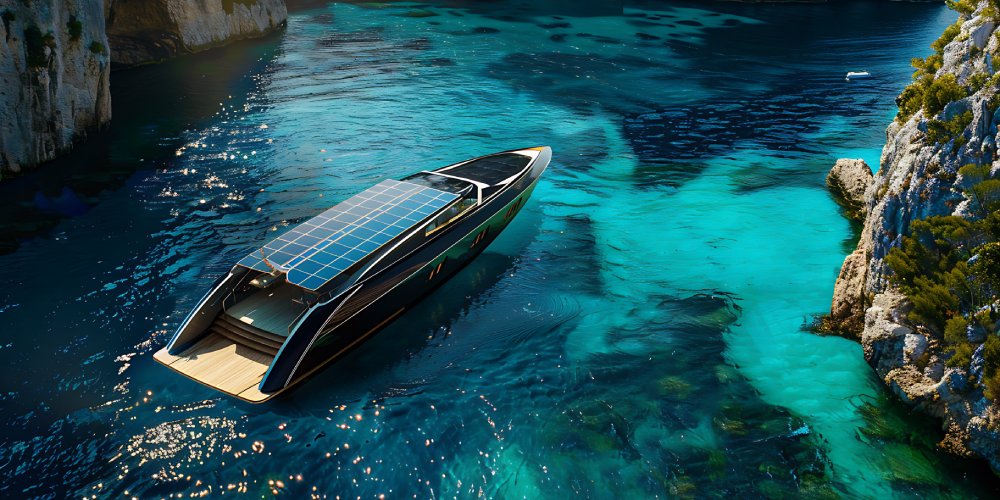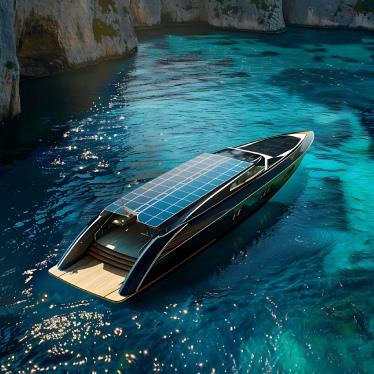
Ever thought about cruising the waters without leaving a carbon footprint? That’s exactly what solar-powered boats offer. These innovative vessels are reshaping the future of boating by using the sun’s energy to power their journeys. Not only are they eco-friendly, but they’re also a big step toward a cleaner, greener future for our waterways.
Key Takeaways
- Solar-powered boats are transforming the boating industry with eco-friendly technologies.
- Advanced solar panels and high-capacity batteries make them more efficient and reliable.
- They significantly reduce carbon emissions and prevent water pollution, protecting marine ecosystems.
- Government incentives and policies are accelerating their global adoption.
- Challenges remain, including energy variability and the environmental impact of manufacturing.
The Evolution of Solar-Powered Boats
Early Innovations
Solar-powered boats aren’t new. Their journey began in the 1970s, when engineers first experimented with combining basic solar panels and electric motors. These early prototypes set the foundation for what has become one of the most promising shifts in marine technology.
Key Milestones
By the mid-1980s, solar-powered boats began gaining recognition as viable alternatives to traditional vessels. By 1995, the first commercial solar passenger boats were in operation, proving the technology’s real-world potential. Since then, advances in solar panel efficiency and battery storage have made these boats practical, efficient, and reliable.
Modern Impact
Today, solar-powered boats are used across sectors — from recreational boating to commercial transport. The integration of solar panels, electric propulsion, and energy storage systems has revolutionized marine travel, reducing dependence on fossil fuels and promoting sustainable exploration of our waters.
Technological Advancements in Solar-Powered Boats
Breakthroughs in Solar Panel Efficiency
Modern solar panels are lighter, more flexible, and more efficient, capturing energy even on cloudy days. This means boats can travel longer distances without relying on traditional fuels.
Innovations in Energy Storage
Energy storage is critical for reliable operation. High-capacity, durable batteries now store surplus energy, ensuring power is available even when the sun isn’t shining. These batteries also last longer and require fewer replacements, reducing waste.
Electric Propulsion Systems
Electric propulsion has revolutionized solar-powered boating. These systems provide quieter, smoother rides with lower maintenance requirements than combustion engines. Features like regenerative braking capture energy that would otherwise be lost, improving efficiency and extending range.
Environmental Benefits
Reducing Carbon Emissions
Solar-powered boats produce zero direct emissions — no CO₂, no NOx, and no particulate matter. This makes them a vital tool for improving air and water quality in boating regions.
Preventing Water Pollution
Unlike fossil-fuel boats that risk oil and fuel leaks, solar boats eliminate this hazard, protecting marine ecosystems and keeping waterways clean.
Supporting Sustainable Tourism
Quiet, fume-free rides enhance the boating experience for tourists while promoting sustainable travel practices. Plus, using solar energy reduces long-term operating costs by lowering fuel consumption and generator use.
Global Adoption of Solar-Powered Boats
Leading Countries
Germany and the Netherlands are leading Europe’s solar boat movement, thanks to their extensive canal systems. In the United States, sunny states like California and Florida are embracing these vessels, supported by strong environmental initiatives.
Government Incentives
Many governments offer tax breaks, grants, and subsidies for adopting solar-powered boats. The European Union has programs supporting both manufacturers and consumers, while U.S. states are investing in infrastructure for docking and charging stations.
Successful Implementations
Projects like the Tûranor PlanetSolar, which circumnavigated the globe using only solar power, highlight the technology’s potential. In Switzerland, solar boats transport passengers across Lake Geneva, proving their commercial viability.
Challenges to Overcome
- Energy Generation Variability: Cloudy weather can reduce energy capture, but hybrid systems and better batteries are helping bridge the gap.
- Manufacturing Impact: Producing solar panels and batteries involves resource-intensive processes. However, recycling methods and sustainable sourcing are improving.
- Regulatory Hurdles: Solar boating is still new, and consistent policies are needed to ensure safety and encourage broader adoption.
The Future of Solar Marine Technology
- More Efficient Panels: Research aims to maximize energy capture for longer-range cruising.
- Hybrid Systems: Combining solar with other renewables for greater reliability.
- Commercial Expansion: Solar ferries and cargo ships could revolutionize maritime transport.
The global market for green marine technologies is projected to surpass $30 billion by 2030, with solar boats playing a major role in reducing the maritime industry’s carbon footprint.
Solar-powered boats are more than a trend — they’re a movement toward a cleaner, quieter, and more sustainable future for boating. From recreational craft to commercial vessels, these boats prove that luxury, performance, and environmental responsibility can coexist. As technology continues to advance, expect to see solar-powered boats becoming a common and transformative presence on our waterways.





